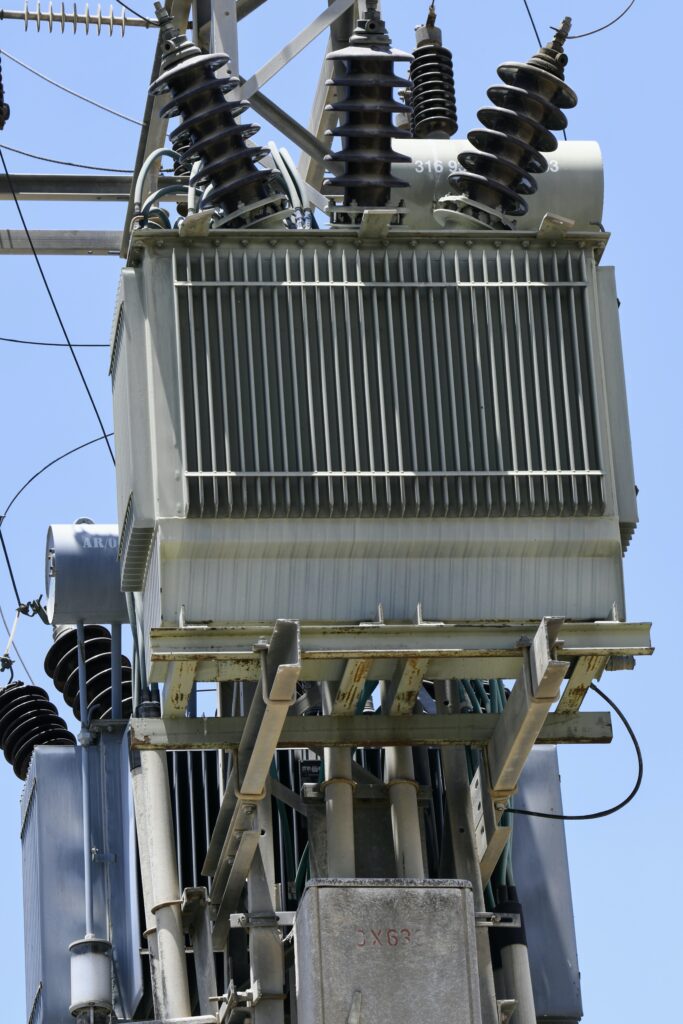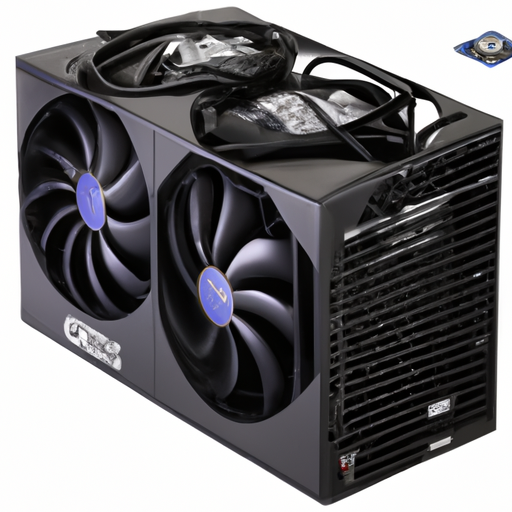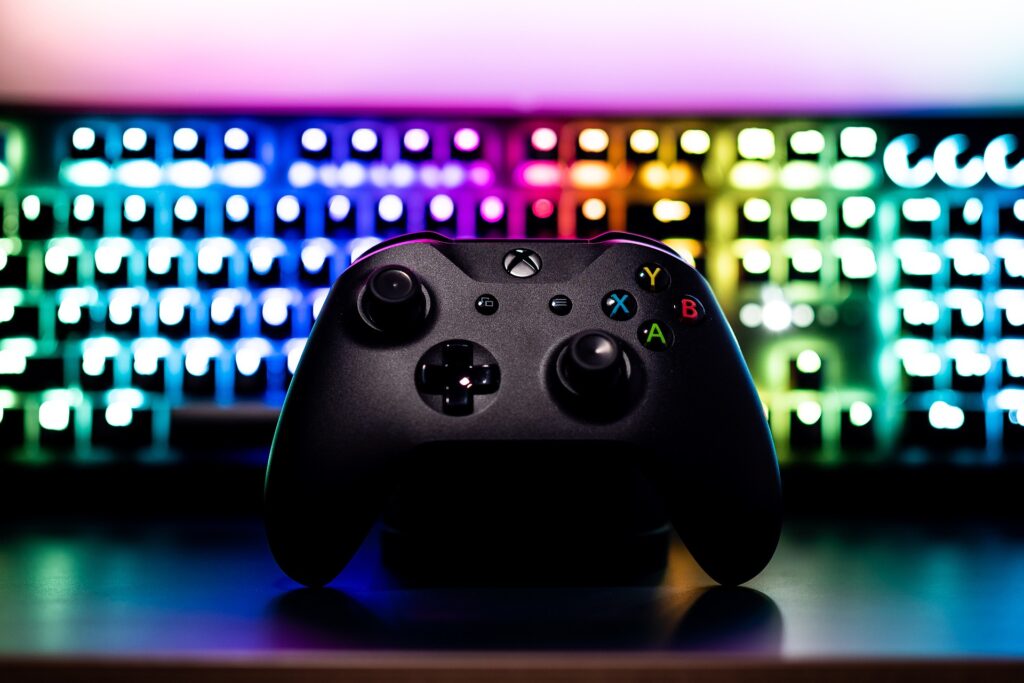How Do I Pick A Power Supply For My Gaming PC? 9 Important Considerations
Are you an avid gamer in the process of crafting your dream gaming setup? If so, you’re probably engrossed in the meticulous selection of a high-performing processor, a top-tier graphics card, and ultra-fast memory modules. But amid all these high-profile components, there’s one critical element that often gets overshadowed—yet serves as the backbone of your entire system—the power supply unit (PSU). You might be asking yourself, “How do I pick a power supply for my gaming PC?” It’s a question that many overlook, but its answer is critical for your system’s performance, longevity, and reliability.
In this comprehensive guide, we’re going to illuminate the often undervalued yet essential factors you should consider when selecting a power supply for your gaming rig. From understanding the nitty-gritty of wattage requirements and efficiency ratings to dissecting the pros and cons of modular versus non-modular designs, we’ve got you covered. Whether you’re a seasoned PC builder or a newbie looking to get your feet wet, this article aims to demystify the intricacies involved in choosing a PSU that fits your gaming needs like a glove.
Think of the power supply as the heart of your gaming PC. Just as the heart pumps blood to every organ in the body, the PSU provides the necessary electrical juice to your processor, graphics card, hard drives, and every other component that needs power. A poor choice can lead to inefficiencies, failures, or even irreversible damage to your precious components. But don’t worry, we’re here to guide you through this pivotal process.
So, fasten your seat belts and prepare to embark on a journey to decode the electrical backbone of your gaming PC. By the end of this article, you’ll be well-equipped to make an informed decision that will power up your gaming experience to a whole new level of immersion and performance. Let’s dive in!

How Do I Pick A Power Supply For My Gaming PC: Determining Power Requirements
Understanding Power Consumption of Components
Choosing the right power supply for your gaming PC is akin to a precise balancing act. You have to ensure that the power supply unit (PSU) can sufficiently meet the needs of each individual component, from the most demanding ones like your graphics card and CPU, down to the seemingly insignificant ones like fans and LEDs. Understanding the power consumption of each component is not just a recommendation; it’s a necessity.
Each component in your PC has its own specific power requirements. For instance, modern graphics cards can consume anywhere from 75 watts to 300 watts or more, depending on the model and workload. CPUs also have their wattage range, generally falling between 65 to 105 watts for mainstream models but can go higher for enthusiast or server-grade options. Hard drives, SSDs, and peripherals like keyboards and mice also consume power, although these usually draw much less. Even cooling solutions, whether air or liquid, can pull a surprising amount of wattage.
By meticulously understanding the power requirements of these components, you equip yourself with the information needed to select a PSU that can comfortably satisfy the power needs of your entire system. This ensures that your gaming PC operates efficiently, stably, and most importantly, safely. It’s crucial to remember that insufficient power can lead to system crashes, unexpected reboots, or even hardware damage, effectively sabotaging your gaming experience.
Calculating Total Power Consumption
Once you’ve established the power needs of each individual component, the next step is to aggregate these numbers to get a bird’s-eye view of your system’s overall power requirements. Manufacturers often list their component’s power requirements in their technical specifications, which can be found on the product’s webpage, packaging, or in the accompanying user manual. Armed with this information, you can proceed to add up these figures to arrive at an estimated total power consumption for your PC.
But, there’s a caveat. The sum of your components’ power requirements gives you a baseline, not the entire picture. In real-world scenarios, power spikes can occur during intensive computing tasks, like 3D rendering, or while playing graphically demanding video games. Additionally, you may also plan to overclock your CPU or GPU, which increases the power consumption beyond the manufacturer’s original specifications.
To account for these variables, it’s advisable to add a buffer on top of your estimated total power consumption. A general rule of thumb is to add an extra 10-20% wattage on top of your calculated total. This added headroom ensures that your power supply can handle any unexpected surges in power demand and gives you some leeway for future upgrades.
By following these two crucial steps—understanding the power consumption of individual components and calculating the total power needs—you’re laying a strong foundation for making an informed decision about the power supply for your gaming PC. This will not only result in a more stable and reliable system but also safeguard your valuable components for years of smooth and immersive gaming.
How Do I Pick A Power Supply For My Gaming PC: Choosing the Right Form Factor
ATX
ATX (Advanced Technology eXtended) is the most common form factor for power supplies and PC cases. It offers a good balance of size, power output, and compatibility with a wide range of components. ATX power supplies are widely available and come in various wattage options to suit different power requirements.
SFX
SFX (Small Form Factor eXtended) power supplies are smaller in size compared to ATX power supplies. They are specifically designed for compact PC cases and are commonly used in mini-ITX systems and small form factor builds. SFX power supplies often have lower power output compared to ATX power supplies, so it’s important to ensure that they can meet the power requirements of your components.
TFX
TFX (Thin Form Factor eXtended) power supplies are even smaller than SFX power supplies and are typically used in slim or low-profile PC cases. They are an ideal choice for HTPCs (Home Theater PCs) and other space-constrained builds. TFX power supplies usually have lower power output than both ATX and SFX power supplies, so it’s important to consider the power requirements of your components before choosing a TFX power supply.
FlexATX
FlexATX power supplies are similar in size to TFX power supplies but are designed for higher power output. They are commonly used in small form factor builds that require more power, such as gaming PCs with high-end components. FlexATX power supplies offer a good balance between compact size and high power output.
How Do I Pick A Power Supply For My Gaming PC: Considerations for Efficiency
80 Plus Certification
Efficiency in a power supply is more than just a marketing term; it’s an indicator of both the unit’s quality and its environmental impact. In simple terms, efficiency describes how effectively a power supply converts AC (Alternating Current) power from your wall outlet into DC (Direct Current) power used by your PC components.
An efficient power supply minimizes waste—energy that is otherwise lost, mostly in the form of heat. This means an efficient PSU will not only help you save on your electricity bills, but it’ll also produce less heat, reducing the strain on your cooling system and potentially increasing the lifespan of your components.
Enter the 80 Plus certification, a standard introduced to promote energy-efficient power supplies. Originating in 2004, the 80 Plus certification is now a well-respected industry standard that objectively measures the efficiency of a power supply. The basic 80 Plus certification ensures that the PSU is at least 80% efficient at 20%, 50%, and 100% of maximum load. However, there are multiple tiers of this certification, each representing higher levels of efficiency:
- 80 Plus Bronze: At least 82% efficient at 20% load, 85% at 50% load, and 82% at 100% load.
- 80 Plus Silver: At least 85% efficient at 20% load, 88% at 50% load, and 85% at 100% load.
- 80 Plus Gold: At least 87% efficient at 20% load, 90% at 50% load, and 87% at 100% load.
- 80 Plus Platinum: At least 89% efficient at 20% load, 92% at 50% load, and 89% at 100% load.
- 80 Plus Titanium: At least 90% efficient at 10% load, 92% at 20% load, 94% at 50% load, and 90% at 100% load.
The higher the certification level, the higher the efficiency, and therefore, the higher the initial cost. However, higher efficiency also translates to less waste, which is not only good for your wallet in the long term but also for the environment.
Efficiency Ratings
While 80 Plus certifications are a great way to gauge efficiency, they are not the be-all and end-all. Many power supplies also come with specific efficiency ratings at different load levels, which can offer a more nuanced view of a unit’s performance. These ratings are usually expressed in percentages and cover how efficient the PSU is at 20%, 50%, and 100% of its maximum rated power output. For example, a power supply might have efficiency ratings of 85% at 20% load, 90% at 50% load, and 88% at 100% load.
Why is this important? Your PC’s power consumption can vary drastically depending on what you’re doing—browsing the web, watching videos, or engaging in intense gaming or video editing. A power supply that maintains high efficiency across all ranges of operation will provide consistent performance and be more cost-effective over its lifespan. It’s especially crucial if you plan to run your PC for extended periods or employ components known to be power-hungry.
If you have a high-end gaming rig with a top-of-the-line CPU and GPU, selecting a power supply with a high-efficiency rating is a smart choice. Not only will it better handle the hefty power demands, but it will also likely provide a more stable power output, ensuring all your components function at their best.
In summary, scrutinizing the 80 Plus certification and specific efficiency ratings at various load levels are important practices when choosing a power supply. These indicators serve as benchmarks that guide you towards making a more informed decision, ensuring you end up with a PSU that is both reliable and responsible.
How Do I Pick A Power Supply For My Gaming PC: Wattage and Ampere Requirements
Card Wattage
When it comes to consuming power in a gaming PC, graphics cards are often the biggest culprits. While a basic or integrated graphics solution may draw as little as 30 watts, a high-end gaming card can consume upwards of 300 watts under heavy load. The wattage requirement for a graphics card is not just a number to glance at; it’s a critical specification that should guide your choice of power supply.
Each graphics card model comes with specific power consumption requirements, usually indicated in its technical specifications. This information can be found on the manufacturer’s website or product listing. In the gaming world, as you ascend the ladder of graphical performance and capabilities, the power requirement generally increases. Brands like NVIDIA and AMD publish detailed power specs for each of their cards, including recommended power supply wattages.
It’s wise to add some wattage headroom on top of your graphics card’s requirements. This additional wattage acts as a buffer against power spikes and offers room for future upgrades. So, if your graphics card requires a 450W power supply, aim for a 500W or 550W unit. This will give you enough overhead to ensure optimal performance and longevity.
Graphics
Power supplies are not one-size-fits-all components. The requirements of your graphics card, especially if you’re into high-end gaming, should guide you in selecting the proper wattage and connector types for your power supply. Some graphics cards require more than one power connector, and it’s crucial to ensure your chosen power supply has these connectors available. This could be one or two 6-pin or 8-pin connectors, or sometimes even more for exceptionally high-end models.
CPU Power Requirements
CPUs, while generally not as power-hungry as graphics cards, still play a significant role in determining your power supply needs. Today’s CPUs can range from low-power, energy-efficient models consuming under 50 watts to high-performance, multi-core behemoths that can draw over 100 watts when under load. Check the TDP (Thermal Design Power) value listed in the CPU specs—it gives you an idea of the maximum amount of power the CPU will draw.
Notably, some high-end CPUs may require additional power connectors. Standard CPUs usually use a single 4-pin or 8-pin connector, but more robust models might require a 4+4-pin or even dual 8-pin connectors for adequate power delivery. Always ensure that the power supply you are considering has the required connectors for your CPU.
Additional Power Needs
When calculating total system power needs, it’s easy to overlook additional components like hard drives, SSDs, cooling solutions, RAM, and even RGB lighting and other peripherals. Though these components individually draw less power compared to your CPU and GPU, collectively they can make a considerable difference.
For instance, a mechanical hard drive might consume between 6-8 watts, while an SSD typically consumes around 2-4 watts. Cooling solutions like water pumps and fans can also draw power, with some high-end cooling setups requiring their own power connectors. Peripherals like gaming keyboards and mice, though usually drawing power via USB ports, should still be considered if they have specific power needs, like RGB lighting.
When you add up the wattage of these components, you get a more complete picture of your system’s power requirements. This allows you to select a power supply that not only meets but comfortably exceeds those requirements, ensuring long-term stability and room for future upgrades.

How Do I Pick A Power Supply For My Gaming PC: Modular vs. Non-Modular
Advantages of Modular PSUs
Modular power supplies offer the advantage of customizable cable management. They come with detachable cables that allow you to connect only the cables you need for your components, reducing cable clutter inside your PC case. This not only improves the airflow within the case but also makes the installation and maintenance process much easier.
Disadvantages of Non-Modular PSUs
Non-modular power supplies come with fixed cables that cannot be removed or replaced. This can result in cable clutter inside the PC case, which can restrict airflow and make cable management more difficult. Non-modular power supplies are generally more affordable than modular ones, but they may not be suitable for those who prioritize neat cable management.
Choosing the Right Connectors
Motherboard Connectors
When choosing a power supply, it’s important to ensure that it has the necessary connectors to power your motherboard. Most motherboards require a 24-pin ATX power connector, while some high-end motherboards may also require an 8-pin or 4+4-pin CPU power connector. Ensure that the power supply you choose has these connectors to ensure compatibility.
Graphics Card Connectors
Graphics cards usually require one or more PCI Express power connectors to provide them with the necessary power. The most common types of PCI Express power connectors are 6-pin and 8-pin connectors. Make sure that the power supply you choose has the appropriate number and type of PCI Express power connectors to power your graphics card.
Peripheral Connectors
In addition to the power connectors for the motherboard and graphics card, it’s also important to consider the peripheral connectors that you may need. These connectors are used to power components such as hard drives, SSDs, and optical drives. The most common types of peripheral connectors are SATA power connectors and Molex connectors. Ensure that the power supply you choose has an adequate number of these connectors to power your peripherals.

How Do I Pick A Power Supply For My Gaming PC: Quality and Reliability
Brands and Reputation
Not all power supplies are created equal, and this is where brand reputation plays an indispensable role. Companies like Corsair, EVGA, Seasonic, and Cooler Master have earned a reputation for producing reliable and high-quality power supplies, backed by rigorous testing and quality control. While it may be tempting to save a few bucks by opting for a no-name brand, the power supply is not the component to cut corners on. A poor-quality unit can lead to unstable system performance, or worse, damage your components in the long run.
Reading customer reviews, watching unboxing and testing videos, and even diving into forums can give you a deeper understanding of a brand’s reputation. Pay special attention to comments on build quality, longevity, and how the power supply handles under load. Professional reviews that include teardowns and efficiency testing are also invaluable resources when assessing a brand’s quality.
Warranty and Customer Support
A robust warranty is often a sign that the manufacturer has confidence in their product. Typical warranties for quality power supplies can range from 5 to 10 years, providing you a long-term peace of mind. Check the terms of the warranty: does it cover just the parts, or does it include labor and shipping costs as well? A comprehensive warranty can save you time, money, and hassle in the event of a failure.
Customer support is another key factor that’s sometimes overlooked. The ability to easily reach out for troubleshooting help, RMA (Return Merchandise Authorization) processes, or any other issues is crucial. Look for brands that offer multiple support channels—such as email, phone, and live chat—and have a reputation for responsive, helpful service.
How Do I Pick A Power Supply For My Gaming PC: Noise and Cooling
Fan Size and Noise Level
For those who value a quiet gaming environment, the noise level of your power supply’s fan can be a critical consideration. Fans can range in size from 80mm to upwards of 140mm. Generally speaking, larger fans are capable of moving more air at lower RPM (Revolutions Per Minute), resulting in quieter operation. Some high-quality power supplies even feature fanless modes under low loads, where the fan only spins up when necessary, reducing noise even further.
It’s not just the size of the fan that matters; the quality of its bearing is equally important. Bearings like Fluid Dynamic and Rifle bearings are generally quieter and more durable than older Sleeve bearings. Product listings and reviews often provide decibel (dB) ratings, which can offer a quantitative measure of noise level.
Thermal Management
The thermal performance of a power supply is tied closely to its efficiency and longevity. Efficient thermal management techniques include temperature-controlled fans that adjust their speed according to the power supply’s internal temperature. Features such as over-temperature protection can automatically shut down the power supply if it reaches dangerous temperatures, protecting your components from potential thermal damage.
Some advanced units come with configurable fan curves or multiple cooling modes, enabling customization according to your cooling and noise priorities. These are especially handy for users who have specific cooling or noise level requirements. By understanding how a power supply manages its thermal performance, you can choose a unit that not only meets your power needs but also does so while maintaining temperature and noise at acceptable levels.

Budget Considerations
Balancing Quality and Cost
It’s natural to want to save money where you can, especially with the ever-increasing costs of high-end gaming components. However, the power supply should never be a component where you skimp. A cheaper, low-quality power supply can be a ticking time bomb, putting your entire system at risk. Electrical irregularities like spikes, sags, and surges can irreparably damage other components in your system, leading to much higher costs in the long run.
So how do you balance quality and cost? Start by setting a realistic budget based on your overall system needs. Within that framework, look for the best quality options available. Often, reputable brands offer a range of products at different price points, providing a pathway to quality without breaking the bank. Seasonal sales, rebates, and refurbished or open-box items from reliable vendors can also be cost-effective ways to acquire a high-quality power supply at a lower price point.
Comparing features versus cost among several models can give you a better sense of value. For instance, a power supply might be more expensive but offer a better warranty, higher efficiency, or modular cables. Weigh these benefits against their additional costs to see if they align with your priorities and long-term gaming needs.
Future Expansion
Upgrading your PC isn’t just about today; it’s also about planning for tomorrow. Gaming components are advancing rapidly, and what suffices today might become obsolete quicker than you’d prefer. This is especially true for power-hungry components like GPUs, which are continually evolving to provide more power and better performance. Additionally, you might find yourself adding extra storage, fans, or even another GPU for a more demanding gaming or content creation setup.
When you buy a power supply, consider what your future needs might be. You might only require a 500W unit today, but what about in two years? Investing in a higher wattage unit now can save you from needing to buy a new power supply when you decide to upgrade other components. Generally, it’s wise to add a buffer of around 20-30% more power than you currently need to account for future upgrades. This extra “headroom” will allow you to add or upgrade components without worrying about exceeding your power supply’s capabilities.
By taking future expansion into account, you not only future-proof your system to some extent but also make a more sustainable and potentially economical choice in the long run. After all, purchasing a slightly more expensive power supply today could save you from needing to buy an entirely new unit down the road, effectively saving money and reducing waste.
How Do I Pick A Power Supply For My Gaming PC: Conclusion
Choosing the right power supply for your gaming PC is not just a minor detail but a critical decision that significantly impacts the overall stability, performance, and longevity of your system. It’s a choice that can be likened to the foundation of a building; a weak one can compromise the entire structure. By taking into account multiple variables, from the basic power requirements of your chosen components like CPU, GPU, and drives, to more nuanced factors such as form factor, efficiency ratings, and types of connectors, you’re making an investment in your machine’s future.
Understanding the wattage needs of your system is paramount. Calculate not just what you need in the present moment, but also what you might require down the line for future expansions or upgrades. Overshooting your wattage needs a little is a good way to give yourself some wiggle room for later additions to your system, be it an extra hard drive or a more powerful graphics card.
Also, don’t underestimate the importance of form factor and the physical size of the power supply. The last thing you want is to discover that your new PSU is too big to fit into your case or too small to provide adequate airflow. Check the dimensions and ensure compatibility with your system’s design. On the topic of airflow, cooling and noise are significant factors, particularly for gamers who might require a PC to be both powerful and quiet for a more immersive experience. Choose a power supply with a reliable fan and cooling system to manage heat effectively.
When considering efficiency, look for a power supply with an 80 PLUS rating, which certifies that the unit is at least 80% efficient at various levels of load. This not only helps you save on your electricity bills but also ensures that your system runs cooler, which extends the lifespan of other components.
The quality of the power supply cannot be emphasized enough. A low-quality unit can jeopardize your entire system, causing instability and frequent crashes, or even permanent damage. Therefore, it is advisable to stick with reputable brands known for their reliability and customer support. Reviews and customer ratings can give you a good idea of what to expect in terms of quality and durability.
Budget is also a concern, of course, but it’s worth remembering that a high-quality power supply can save you money in the long run by preventing system failures and minimizing energy waste. Therefore, while initial costs may be higher, the long-term benefits are worth it.
Finally, good customer support can go a long way in ensuring peace of mind. If you encounter any problems or have questions about setup, knowing you can rely on prompt and helpful support can make the entire experience more comfortable and enjoyable.
In summary, selecting the perfect power supply for your gaming PC is a complex decision that warrants careful thought and consideration of multiple factors. By being thorough and prioritizing quality, you can set up your system for not only optimal performance but also for a reliable, smooth, and immersive gaming experience that stands the test of time.





